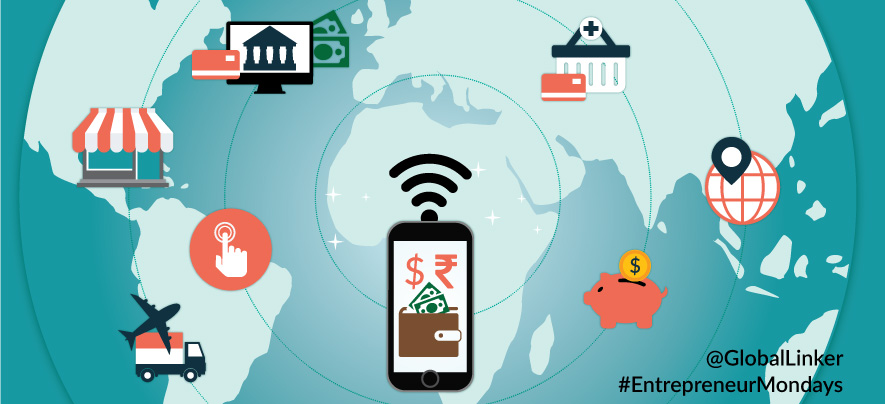
Online Or Offline, Retailers Are Best Served By The Mobile Wallet

ดิจิตอลและเทคโนโลยี
439 week ago — ใช้เวลาอ่าน 7 นาที
When plastic payments – credit cards – were introduced to the world in the 1940s-50s, the method of payment was new, but the concept of paying on credit was as old as the world. For instance, in the late 1800s, merchants and consumers would pay for goods through credit coins and charge plates.
But the development of the credit card was one of the most significant phenomena of the modern financial service scene. According to MasterCard, in 1946, John Biggins, a banker in Brooklyn, New York, introduced the first bank card called ‘Charg-It’. Later, the Diners Club card came into the picture and by 1951 there were around 20,000 Diners Club cardholders.
Diners Club Card entered the credit card market of India in 1969. However, it was not until the Andhra Bank introduced its own credit card that Indian banks entered the field. By the 1990s, more and more people began using these cards, and hence more and more businesses were forced to start accepting them – or lose customers to those who did.
The next 20 years or so saw a boom in the credit card business in India. Further development took place as more establishments were willing to accept them in place of cash, and more consumers found the concept to be a convenient mode of making payments with no need to carry cash. But this was followed by a crunch. The number of credit cards in India has been registering a negative growth rate since the year 2010.
According to a report by Datamonitor research, credit cards are still poorly represented in the country. The number of debit card issued in India is around 500 million while the credit card market stands at around 30 million with a value turnover of around Rs 2,500 crores. In a country with nearly 700 million bank accounts, we are still behind other countries not only in terms of credit card usage, but also in credit cards spend as a proportion of the total expenditure.
Overcautious Approach By Banks
Following the freeze on liquidity in the aftermath of the economic crisis of 2008, as well as tightening credit and capital standards, banks and credit card companies in India became overcautious. They ceased to take any risk at all and tightened the process of issuing credit cards. Banks adopted tougher standards and filters to ensure cards were issued only to the ‘right’ and safe customers. Certainly, this helped banks to control the excesses of the previous few years, but it squeezed millions of credit cards out of the system.
Merchant acceptance: Merchants have to pay a fee on every transaction using credit cards, which makes them averse to accepting payments through credit card. This is why you find that many small to medium merchants simply refuse payment by cards. Some try to discourage payment through credit cards by putting a minimum bill amount clause for card payments, while others charge customers an extra processing fee.
The Indian psyche towards credit cards: Credit cards are often associated with excessive spending while the Indian psyche has always been conservative about money. So inherently Indians are taught to live within their means.
Inadequate POS network in India: As per an estimate there are only about 12 lakh POS (point of sale) machines installed at merchant outlets with four bankers – SBI, ICICI Bank, HDFC Bank and Axis Bank – controlling over 60 per cent of the POS network. The network was never scaled up even though banks issued millions of cards. PSU banks, which issue the bulk of debit cards, have a negligible presence in the POS space. This lack of initiative by banks in setting up POS terminals is also not helping the expansion of credit cards.
Contactless Payment: A Game Changer
Mobile wallets have been billed as the future of real-world payment technologies. Interoperability – meaning one system that facilitates all types of payment alternatives, just as a physical wallet holds currency, coins, payment cards and loyalty cards – is a distinguishing feature of this concept.
With major players like Google, Apple, PayPal and others joining the initiative and developing their own mobile-first payment technologies, it seems to be safe that this has wrought a shift in consumer payment technologies.
Though the concept of the mobile wallet is relatively new in India, 10-12 players are already active in this space, underscoring the future potential of mobile wallets as a business vertical. Companies such as Paytm, Oxigen, Citrus and Mobikwik are among the top mobile wallets, with Paytm having 100 million users, a number higher than the cumulative number of credit cards in India.
A mobile-enabled payment system is beneficial to all the stakeholders. For merchants, it presents an opportunity to boost revenues by reducing operating costs. For big stores it helps reduce queues by reducing the turn-around time at the payment counter. Mobile wallets also have the ability to help merchants sell more goods and services during slow times by enticing their consumer bases with discounts and coupons. In addition, they enhance the overall customer experience, thereby increasing the merchant’s brand proposition. Creating a consumer-centric shopping experience helps companies stay ahead of the competition.
Companies like ePaisa help businesses accept these new modes of payments with their point of sale app with integrated payment processing that enables them to accept chip and PIN, and swipe cards or even mobile wallets. Local sellers can easily download the app on their smartphone or tablet and start accepting payments contactless and EMV payments on the go.
In August this year, ePaisa also launched Bitcoin payment acceptance for its merchants, staying true to its omni-payments vision.
Visa launched a new local mobile service called mVisa to cater to the unbanked and under-served. This service works across different financial institutions and overcomes the lack of access to physical bank branches. It doesn’t require card readers to accept card payments – only a mobile app for customers and a digital acquiring solution like the ePaisa app with merchants.
High Growth Potential
According to a study by research and consultancy firm RNCOS, the current Indian market size for the m-wallet stands at about Rs 350 crore and is estimated to rise to Rs 1,210 crore by 2019. The segment is projected to grow at a CAGR of around 30 per cent from 2015-2019. The growth will be driven by an increase in demand for smartphones, which is estimated to grow at a higher pace, and rising mobile Internet users, which grew at 92 per cent in 2014. New and emerging market players will also drive growth in the segment.
ดูโปรไฟล์ของ Siddharth
Most read this week
Trending









Comments
Please login หรือ สมัครสมาชิก to join the discussion